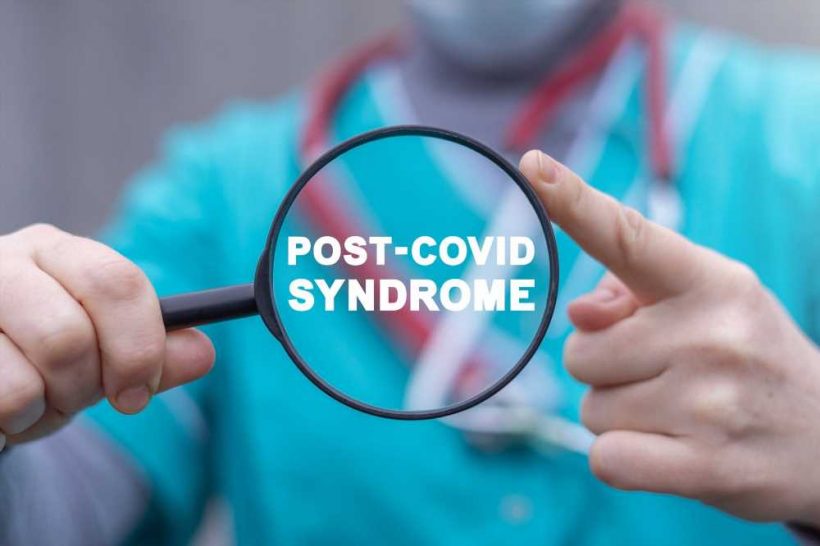In a recent study published in the Scientific Reports Journal, researchers examined the cognitive characteristics of patients with post-coronavirus disease 2019 (COVID-19) syndrome.
 Study: Cognitive impairment in young adults with post COVID-19 syndrome. Image Credit: PanchenkoVladimir/Shutterstock.com
Study: Cognitive impairment in young adults with post COVID-19 syndrome. Image Credit: PanchenkoVladimir/Shutterstock.com
Background
Around 15% of COVID-19 patients experience different symptoms months after the infection. This disorder is called post-COVID-19 syndrome and mainly affects females aged 40-55. Fatigue, headache, cognitive dysfunction, and respiratory difficulties are common symptoms reported by patients with this syndrome.
Three hypotheses are postulated as the underlying cause(s) of the post-COVID-19 syndrome: viral persistence, cytokine storm, and autoantibodies. Regardless, the syndrome significantly interferes with patients' activities, with cognitive symptoms being the most concerning for them.
While several studies have explored the cognitive profile of patients with this syndrome, some limitations exist.
Notably, studies do not differentiate whether the sample comprised patients with post-COVID-19 syndrome only or those with sequelae of COVID-19.
The underlying causes of post-COVID sequelae are organ damage from severe illness, whereas, for post-COVID-19 syndrome, there is, so far, no evidence of structural damage. Therefore, the two conditions might differ, with heterogeneous causes and cognitive profiles.
About the study
In the present study, researchers investigated the cognitive features of patients diagnosed with post-COVID-19 syndrome or compatible symptoms. Patients aged 18 or older with COVID-19 and a diagnosis of or suspected post-COVID-19 syndrome, presenting with neurologic complaints, were eligible.
The syndrome was recognized when new symptoms from the acute phase lingered or aggravated three months after COVID-19. Participants completed a questionnaire for information on sociodemographic data, medical history, and cognitive/clinical complaints related to symptoms of the post-COVID-19 syndrome.
The neuropsychological assessment protocol included a brief test of attention (BTA), fluency tasks, Weschler adult intelligence scale (WAIS)-IV matrix reasoning, Stroop color-word interference test, Rey-Osterrieth complex figure (ROCF), digit span forward and backward, and the Spanish test of verbal learning (TAVEC).
The neuropsychological evaluations were performed online due to the COVID-19 pandemic and restrictions. Participants were stratified into three age groups to analyze differences by age – 26-39 (group 1), 40-49 (group 2), and 50-64 (group 3). Nonparametric statistical analyses were performed, and the effect size was estimated.
Findings
The study recruited 214 participants, with a mean age of 47.4; 85% were females. The common cognitive complaints were concentration difficulties, anomia, speed of processing and recalling recent events, multi-tasking, and reading comprehension.
A correlation analysis between sociodemographic variables and neuropsychological test performance revealed that age correlated with nearly all tests.
The correlations were positive between age and tests, except for the ROCF copying task, where age correlated negatively. The neuropsychological tests were compared between hospitalized and non-hospitalized participants.
The team found no significant differences in tests between these two groups. However, significant age differences were observed, as hospitalized patients were older than non-hospitalized patients.
Thirty-two participants (15%), aged, on average, 53, had normal cognitive performance in all tests. Most participants (> 85%) had impaired scores in at least one of the tests. The normal cognition (NC) subjects were older than participants in the cognitive impairment (CI) group.
Significant differences were observed in all tests, except for ROCF copy, ROCF copy-time, and object naming tasks, between NC and CI patients.
More than 97%, 91%, and 71% of participants in groups 1, 2, and 3, respectively, had at least one test with impaired performance.
Statistical analyses showed better test performance of group 2 participants than group 1 subjects, with differences only in TAVEC A (learning phase) and TAVEC B (interference list) tasks at a moderate effect size. This suggested that younger participants (group 1) had difficulties learning verbal information.
Group 3 patients performed better than group 2 subjects, with an effect size > 0.5 in Stroop word-color interference, Stroop word reading, and ROCF copy-time tasks. The effect size was small for the remaining tasks, which showed significant differences.
This suggested that group 2 subjects performed worse in processing speed, visual memory, and executive functions tasks. Between groups 1 and 3, younger patients had more difficulties in at least one of the tests.
Conclusions
Taken together, most patients with post-COVID-19 syndrome (> 85%) exhibited alterations in at least one of the neuropsychological tests.
Attention was the cognitive function with the highest deficit, irrespective of age. Younger patients showed more frequent impairments in some cognitive domains than older subjects.
The older patients had relatively preserved cognitive functions with only mild attention and processing speed impairment, while the younger subjects had more marked and heterogeneous cognitive impairment.
-
Herrera, E. et al. (2023) "Cognitive impairment in young adults with post COVID-19 syndrome", Scientific Reports, 13(1). doi: 10.1038/s41598-023-32939-0. https://www.nature.com/articles/s41598-023-32939-0
Posted in: Child Health News | Medical Science News | Medical Research News | Disease/Infection News | Healthcare News
Tags: Autoantibodies, Cognitive Function, Coronavirus, covid-19, Cytokine, Fatigue, Headache, Pandemic, Respiratory, Syndrome

Written by
Tarun Sai Lomte
Tarun is a writer based in Hyderabad, India. He has a Master’s degree in Biotechnology from the University of Hyderabad and is enthusiastic about scientific research. He enjoys reading research papers and literature reviews and is passionate about writing.
Source: Read Full Article
